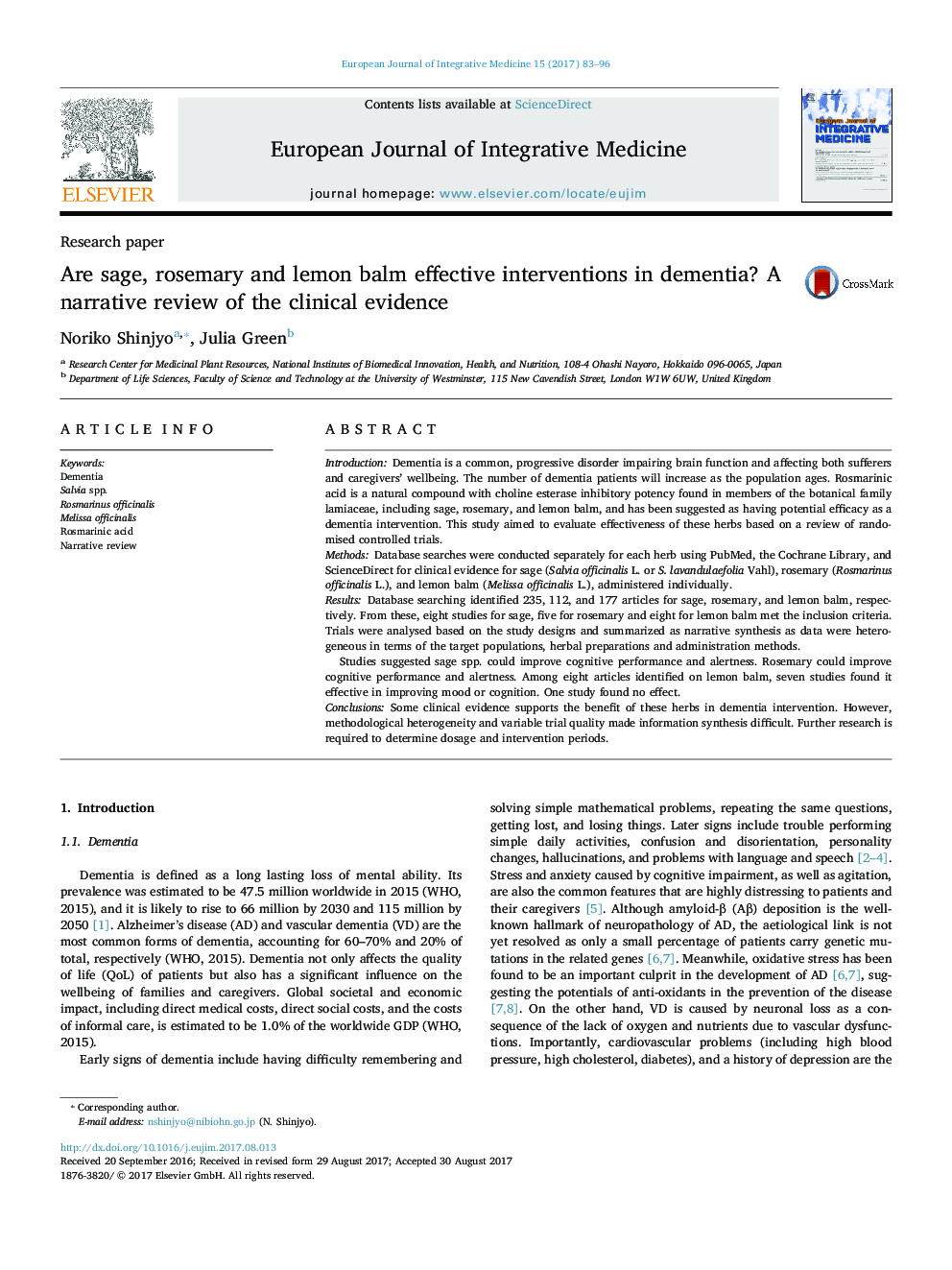| کد مقاله | کد نشریه | سال انتشار | مقاله انگلیسی | نسخه تمام متن |
|---|---|---|---|---|
| 5547273 | 1556038 | 2017 | 14 صفحه PDF | دانلود رایگان |
IntroductionDementia is a common, progressive disorder impairing brain function and affecting both sufferers and caregivers' wellbeing. The number of dementia patients will increase as the population ages. Rosmarinic acid is a natural compound with choline esterase inhibitory potency found in members of the botanical family lamiaceae, including sage, rosemary, and lemon balm, and has been suggested as having potential efficacy as a dementia intervention. This study aimed to evaluate effectiveness of these herbs based on a review of randomised controlled trials.MethodsDatabase searches were conducted separately for each herb using PubMed, the Cochrane Library, and ScienceDirect for clinical evidence for sage (Salvia officinalis L. or S. lavandulaefolia Vahl), rosemary (Rosmarinus officinalis L.), and lemon balm (Melissa officinalis L.), administered individually.ResultsDatabase searching identified 235, 112, and 177 articles for sage, rosemary, and lemon balm, respectively. From these, eight studies for sage, five for rosemary and eight for lemon balm met the inclusion criteria. Trials were analysed based on the study designs and summarized as narrative synthesis as data were heterogeneous in terms of the target populations, herbal preparations and administration methods.Studies suggested sage spp. could improve cognitive performance and alertness. Rosemary could improve cognitive performance and alertness. Among eight articles identified on lemon balm, seven studies found it effective in improving mood or cognition. One study found no effect.ConclusionsSome clinical evidence supports the benefit of these herbs in dementia intervention. However, methodological heterogeneity and variable trial quality made information synthesis difficult. Further research is required to determine dosage and intervention periods.
Journal: European Journal of Integrative Medicine - Volume 15, October 2017, Pages 83-96
